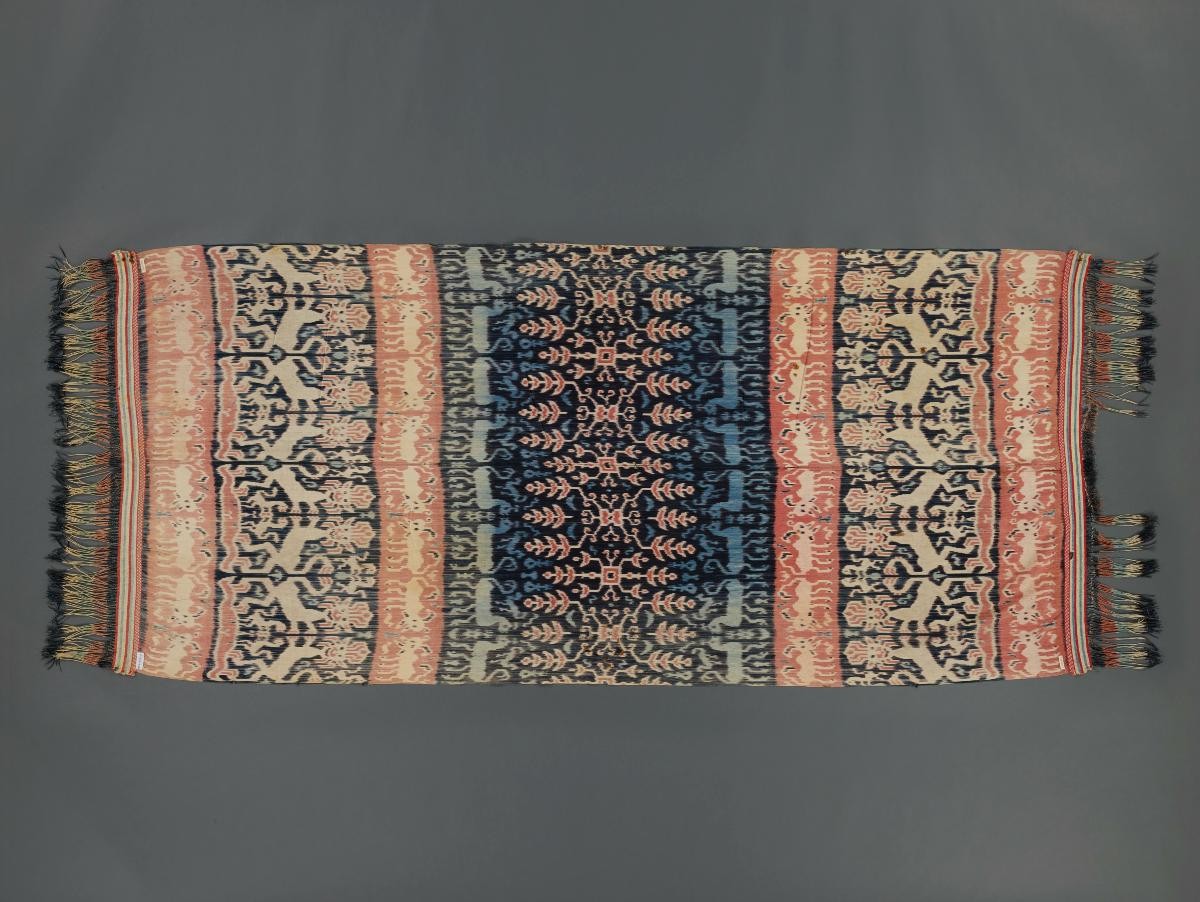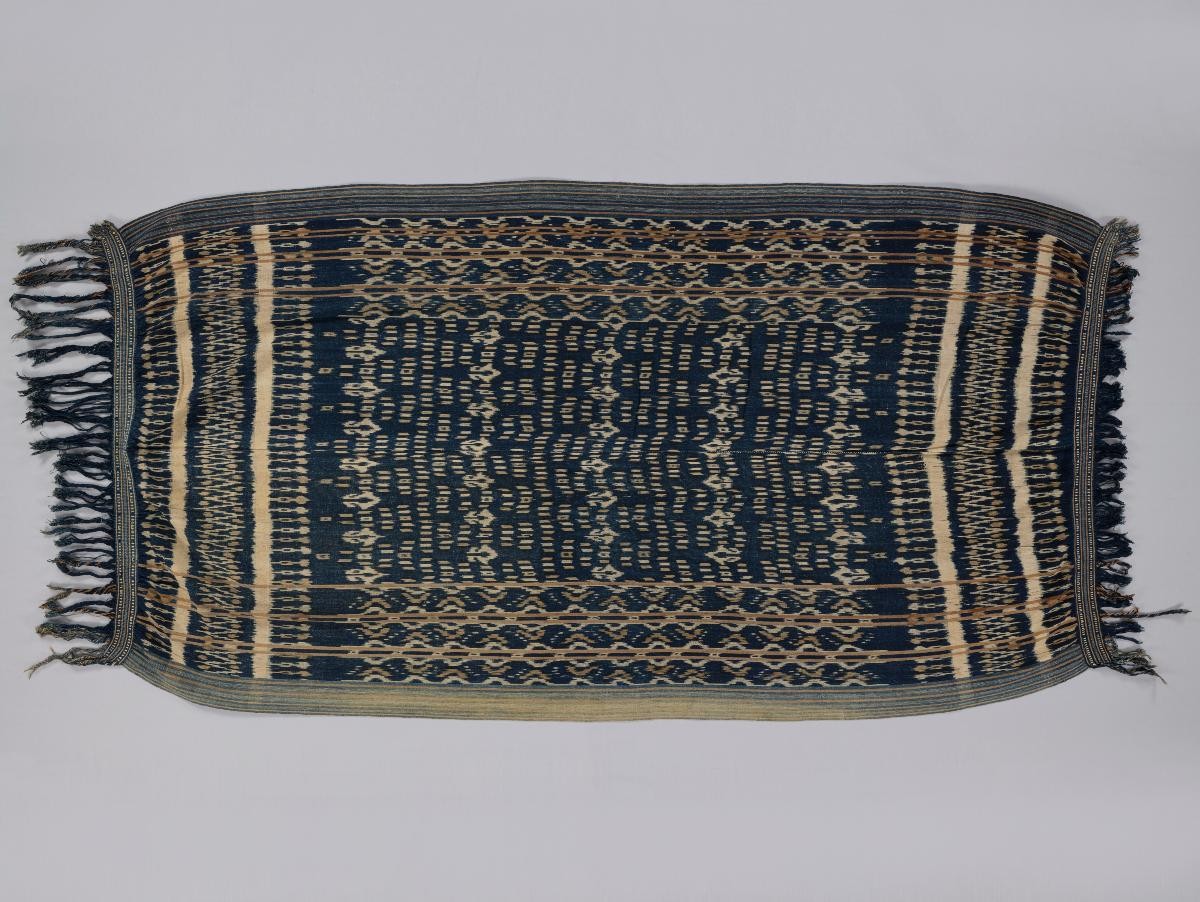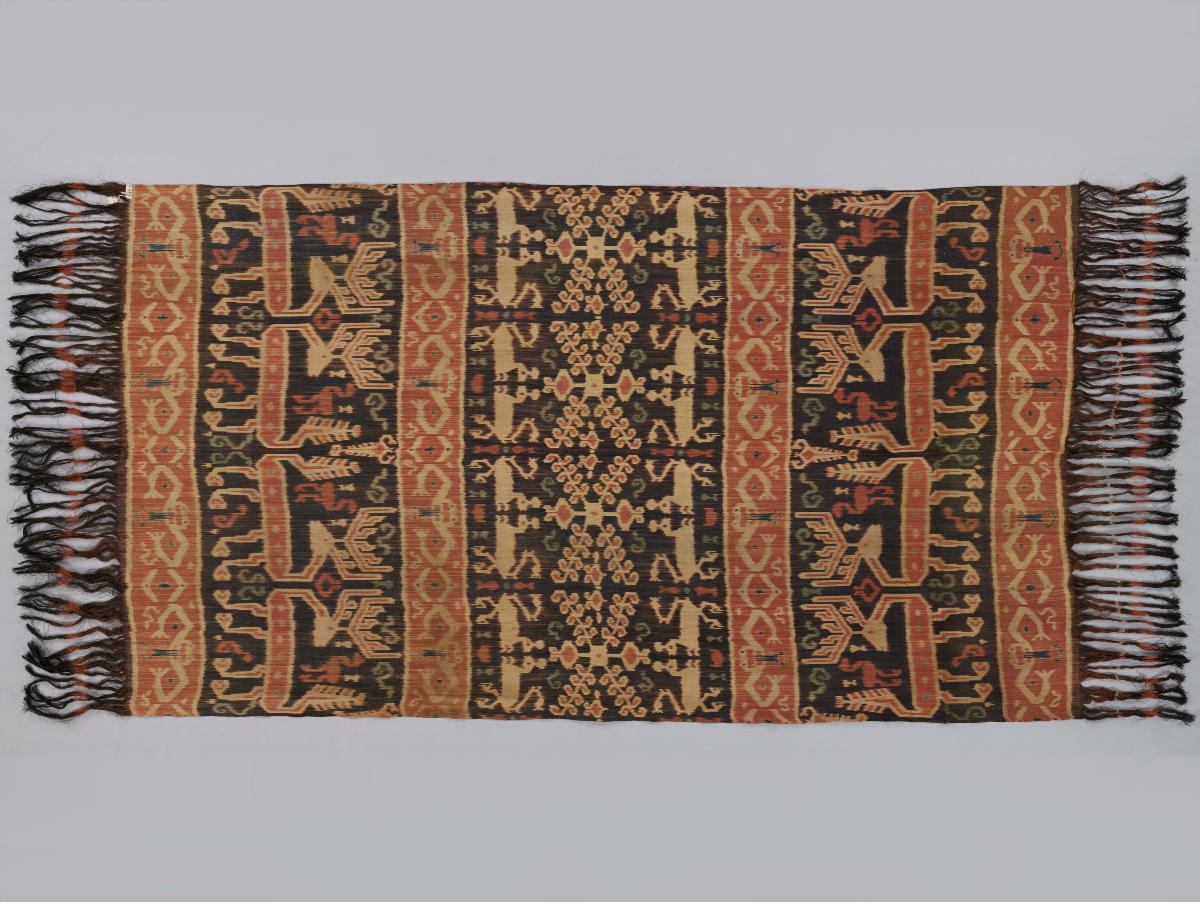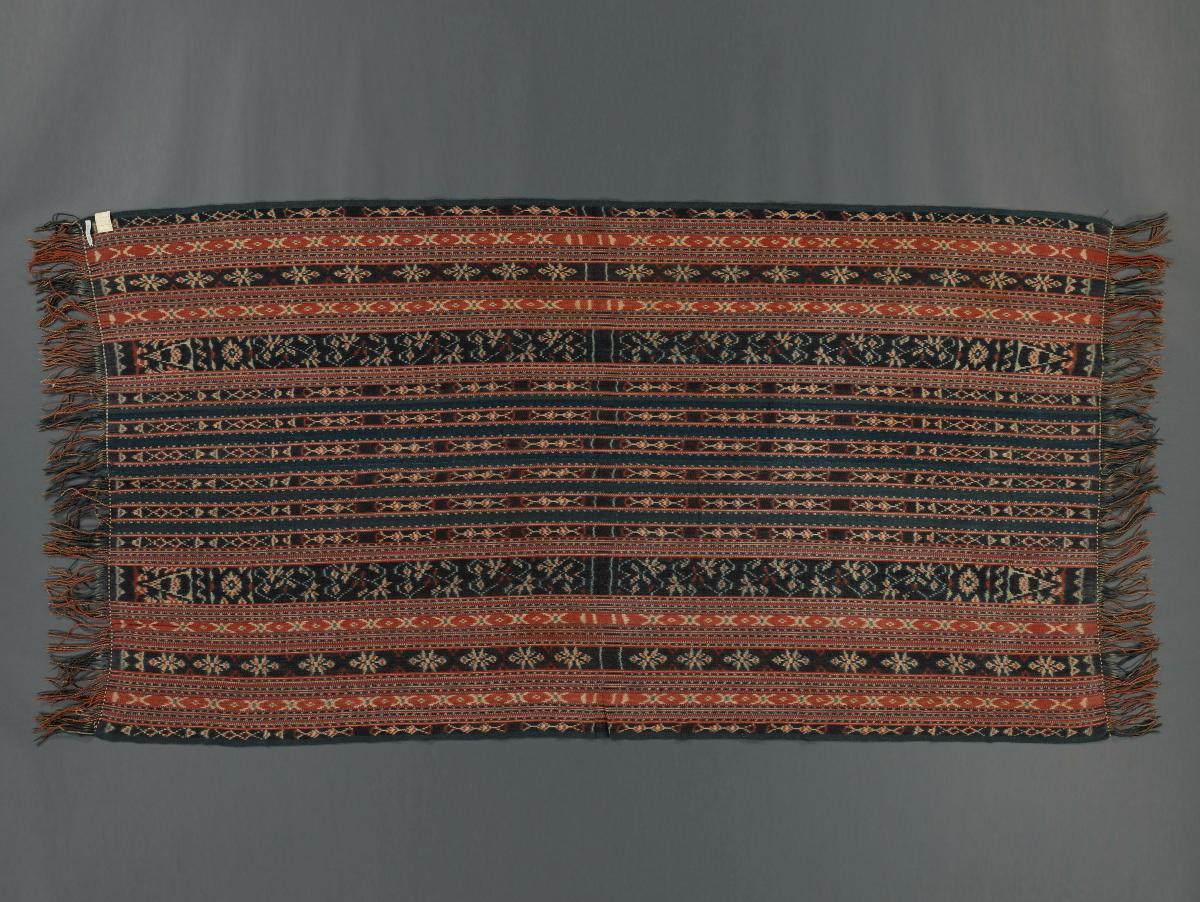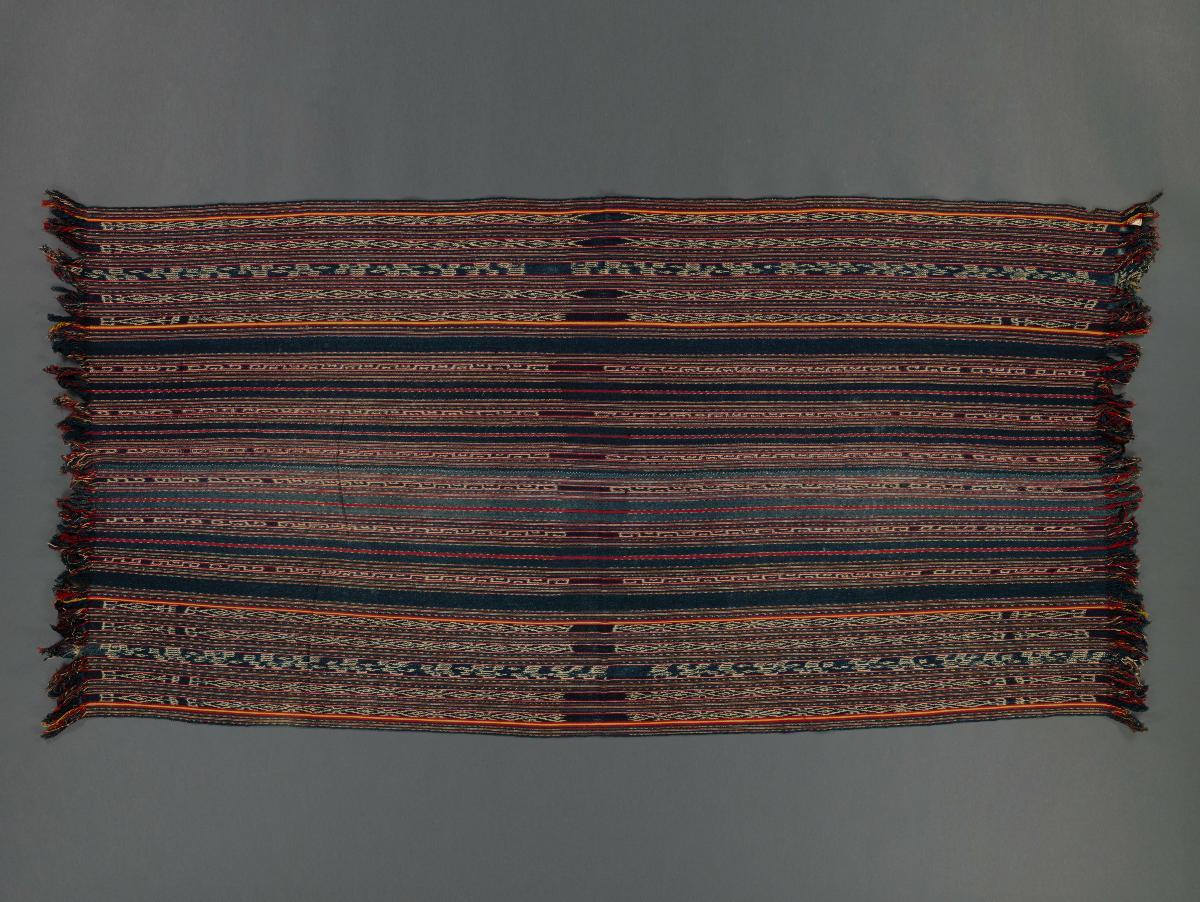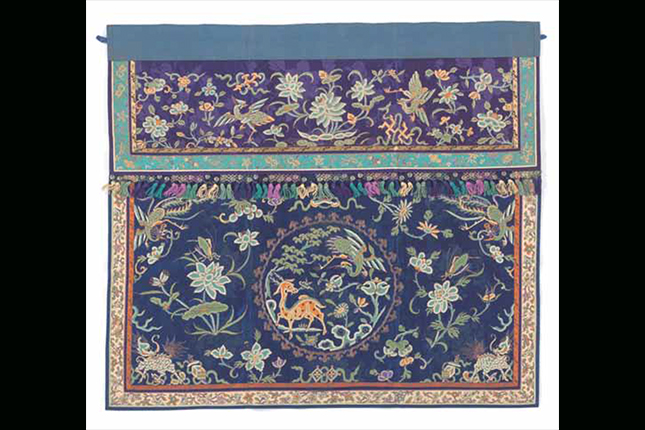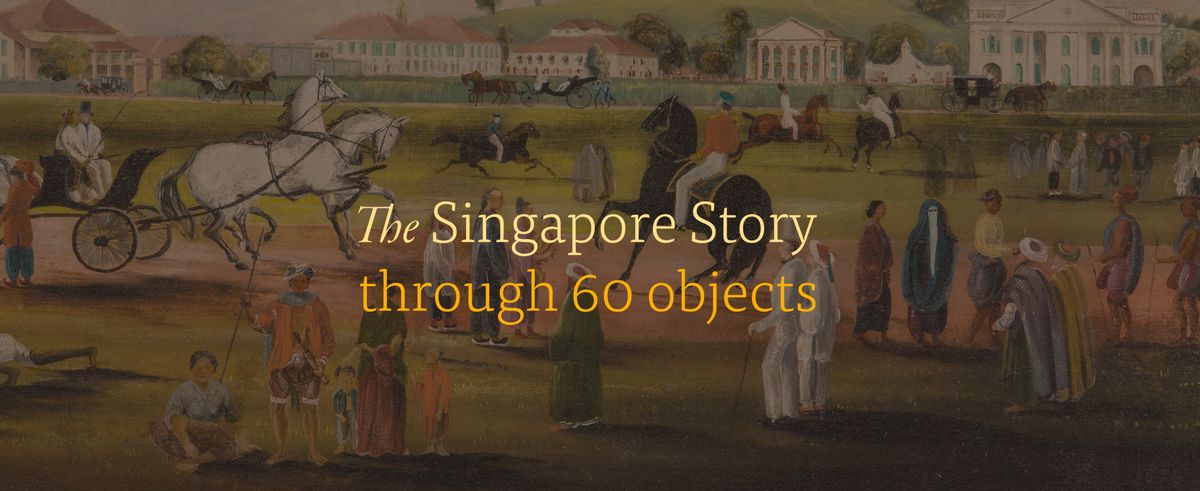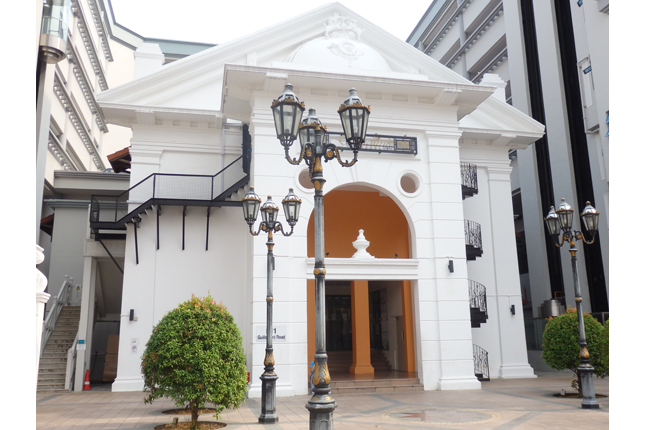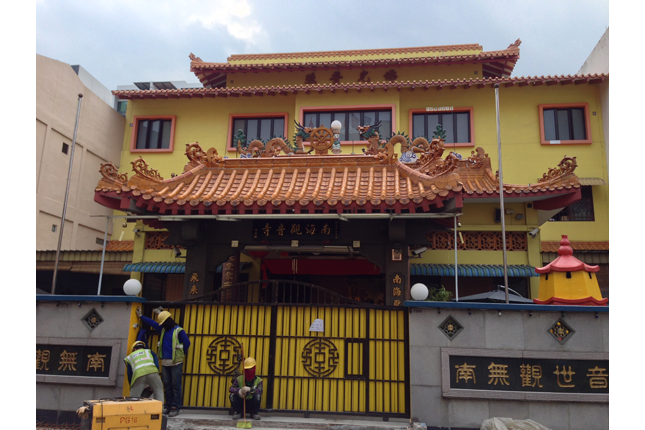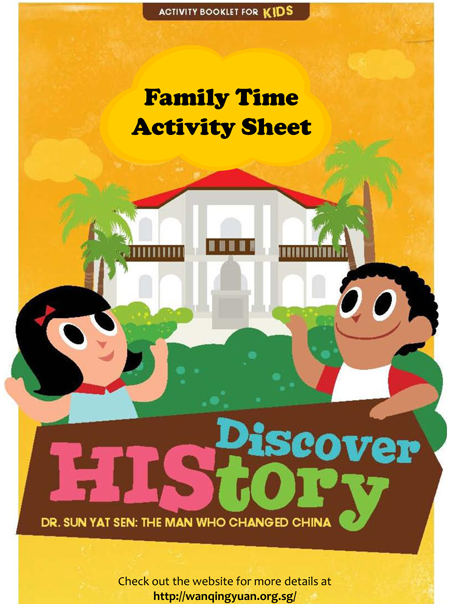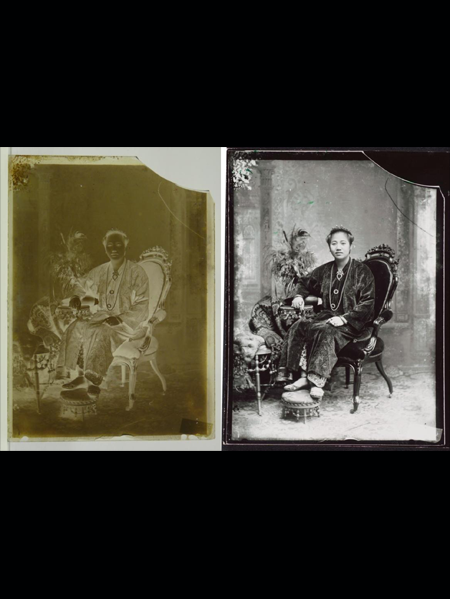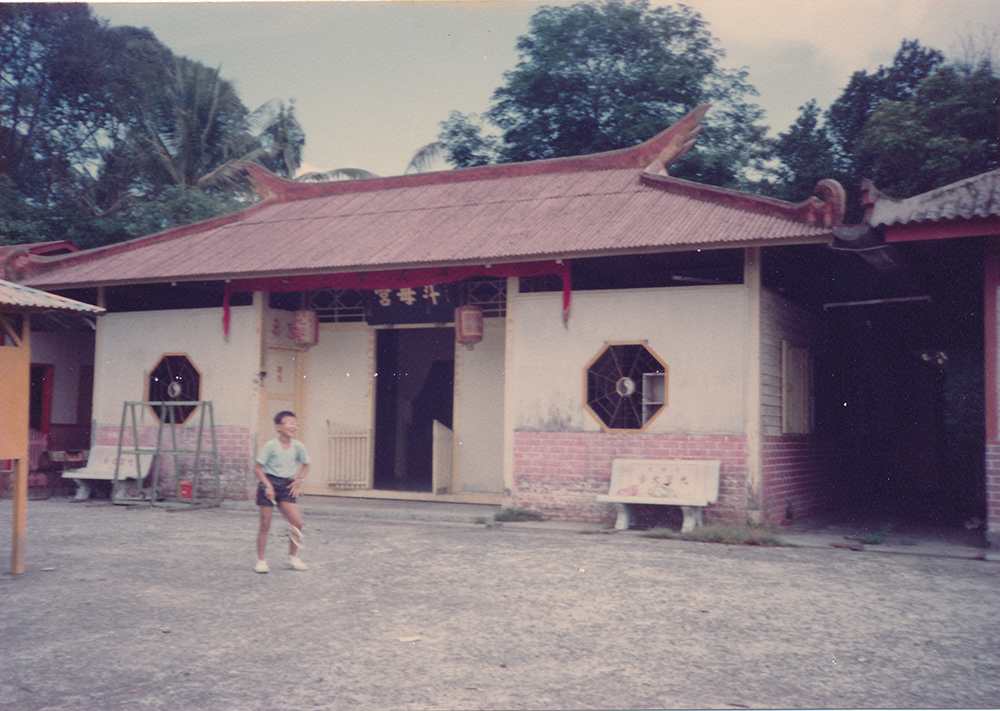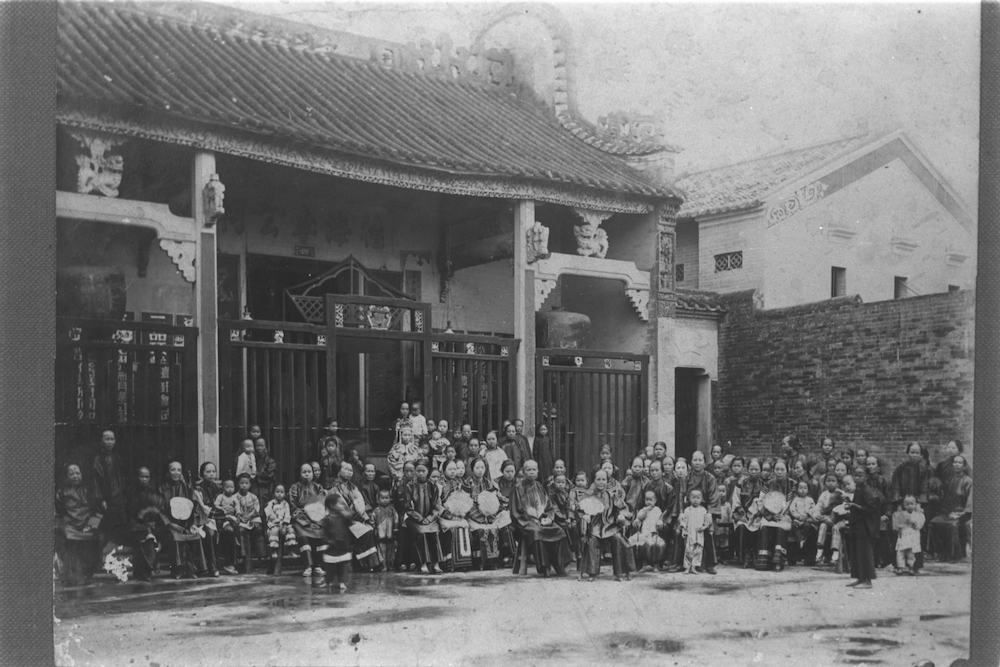Sumba textiles play an important role in gift exchanges at weddings, funerary rituals and in the representation of one’s social status. Sumbanese men wore the hinggi kombu either on the shoulder or wrapped around one’s body. Kombu refers to a type of red dye derived from the roots of the kombu tree and was used to denote the nobility status of these textiles. Unlike other warp ikat textiles which were primarily decorated with geometric and linear patterns, ikat textiles made in Sumba are distinctively decorated with anthropomorphic and animal figures. This hinggi kombu is made up of seven horizontal warp panels, and includes motifs such as standing lions, horses, dogs and stylized floral patterns. These motifs are derived from everyday life in Sumba. They symbolise societal structures of Sumbanese society and the sovereign power of its rulers. Horses were the most common motif found on Sumbanese cloths due to their importance in rituals associated to warfare and hunting. In particularly, horses symbolise wealth and authority. The standing lions might have been inspired by the Dutch coat of arms and could have been included on hinggi cloths which were exported to the Netherlands in the early twentieth century. As the depiction of lions on hinggi cloths became more commonplace, the lion gradually became symbolic of the power of Sumbanese kings.




